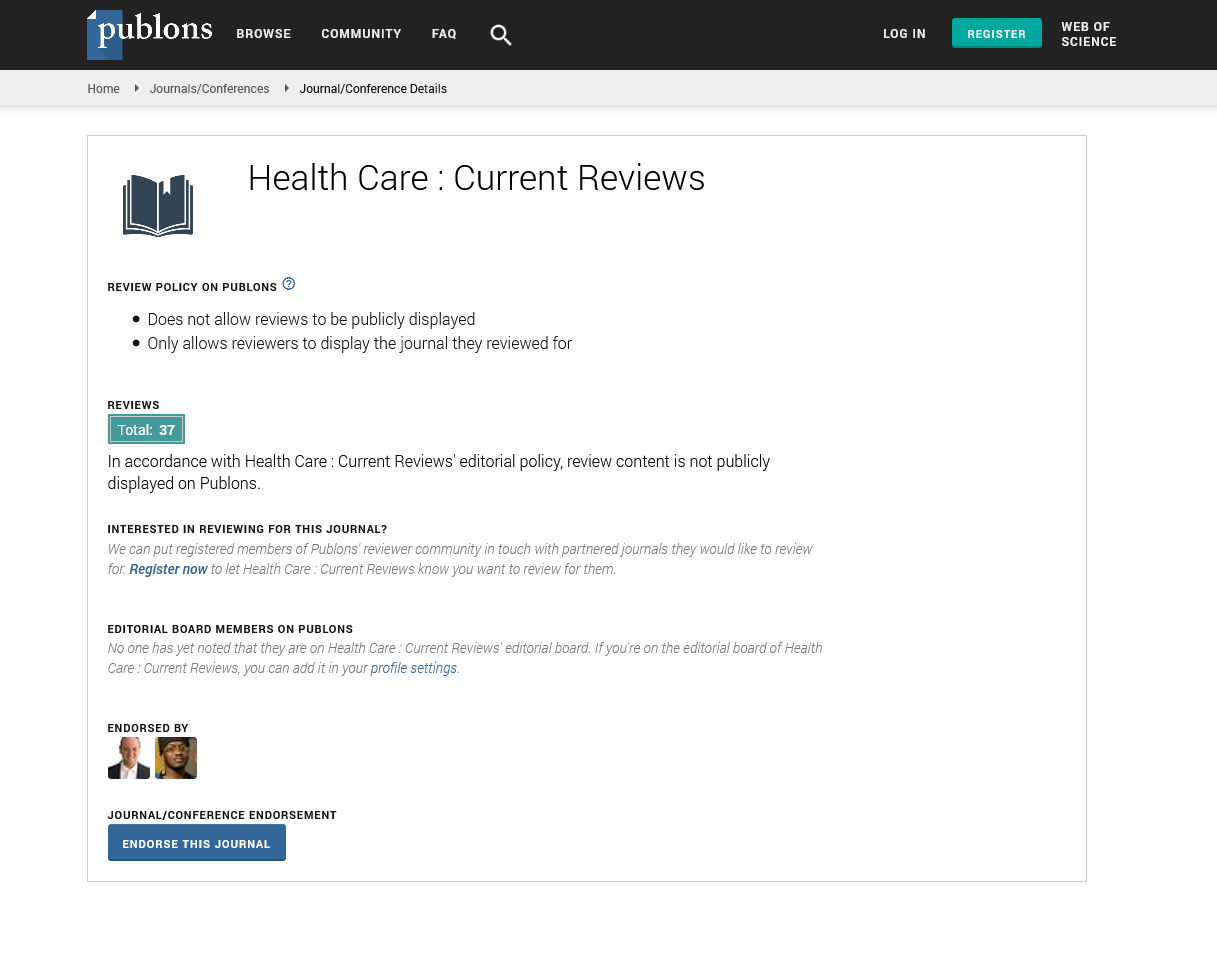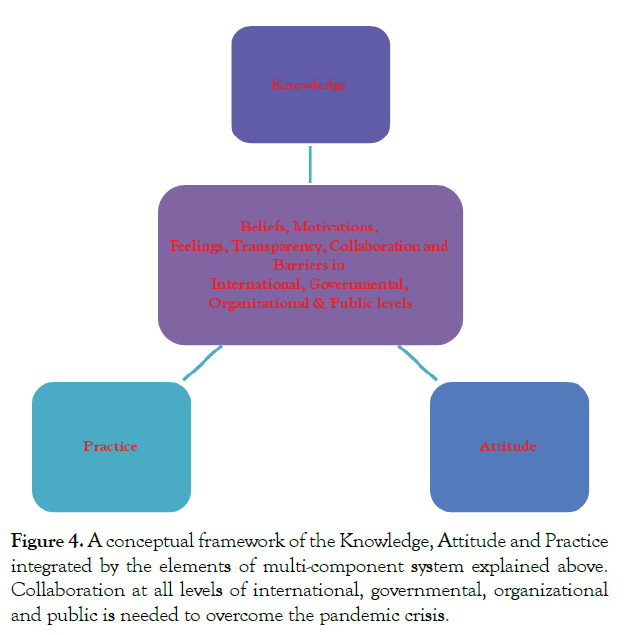Indexed In
- Open J Gate
- Academic Keys
- RefSeek
- Hamdard University
- EBSCO A-Z
- Publons
- Geneva Foundation for Medical Education and Research
- Google Scholar
Useful Links
Share This Page
Journal Flyer
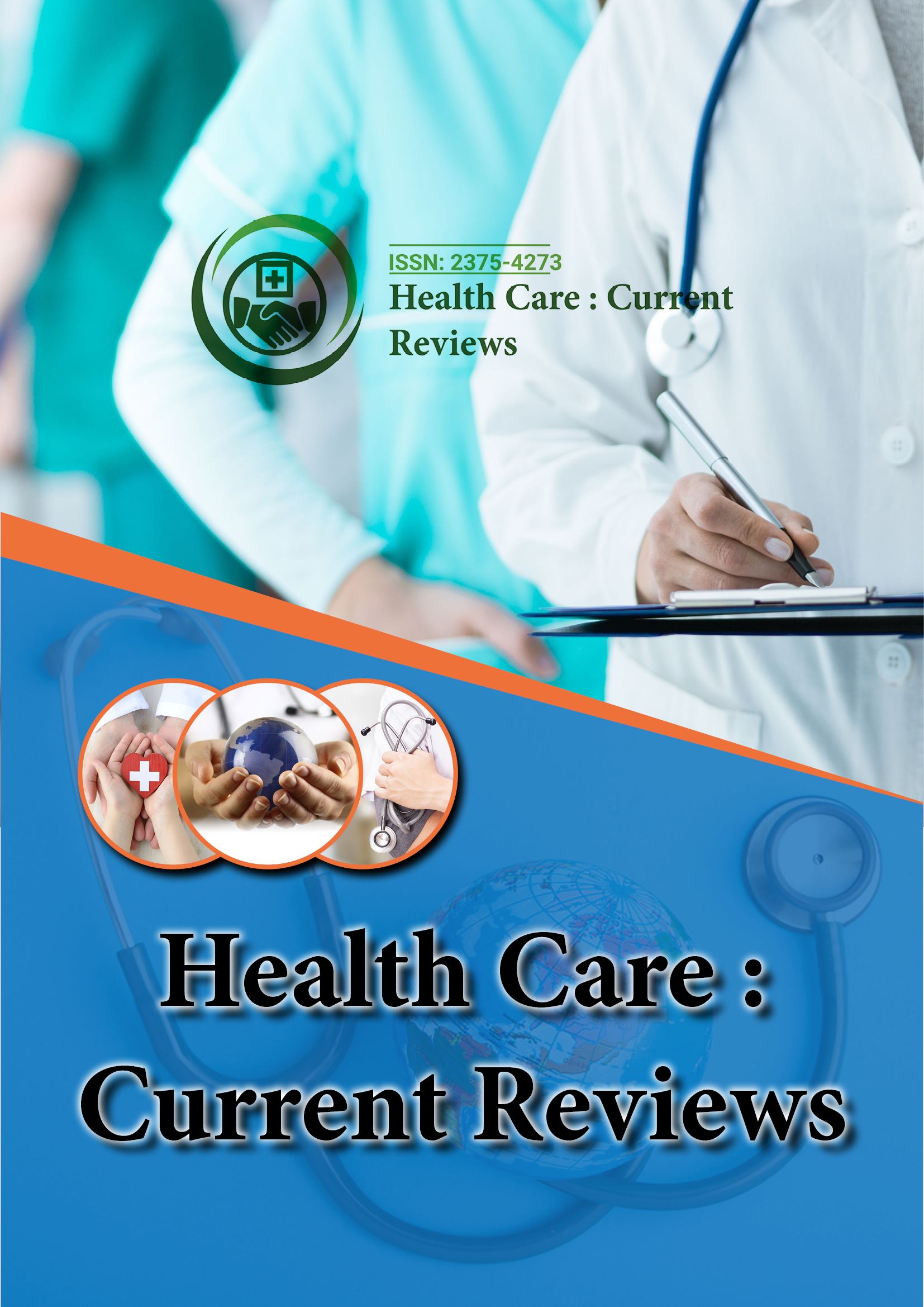
Open Access Journals
- Agri and Aquaculture
- Biochemistry
- Bioinformatics & Systems Biology
- Business & Management
- Chemistry
- Clinical Sciences
- Engineering
- Food & Nutrition
- General Science
- Genetics & Molecular Biology
- Immunology & Microbiology
- Medical Sciences
- Neuroscience & Psychology
- Nursing & Health Care
- Pharmaceutical Sciences
Research Article - (2020) Volume 8, Issue 4
KAP Evidence and Farecasting the Corona Virus Outbreak in the UK, Spain and Belgium
Maryam Moghadami*, Ka Wa2 and Abbas Smiley32PhD, Dan Ai Data, London, England
3Assistant Professor, Westchester Medical Center, New York Medical College, NY, United States
Received: 28-Jul-2020 Published: 18-May-2020, DOI: 10.35248/2375-4273.20.8.256
Abstract
Through this paper the author aims to provide a high-level overview of the root cause of the issue of sedentary life. With the onset of the modern age came the onset of a new category of diseases, the diseases caused due to a sedentary lifestyle. With a fall of 30% since 1960 in jobs requiring physical activity, 80% of jobs today are sedentary or require only light activity. According to WHO, 60-85% of the population does not engage in enough activity keeping this thought in mind the author through this paper aims to shows that the rate of diseases like obesity, cardiovascular diseases and diabetes type-2 has increased substantially since the 1950s, which may be attributed to the increased availability, affordability and range of different machines for different purposes which has made life easier and at the same time brought human energy expenditure to a relative stand still.
Keywords
Sedentary; Diabetes; Obesity; Cardiovascular diseases; Headaches
Introduction
Coronaviruses are a large family of viruses, ranging from the common cold virus to more serious diseases such as SARS, Morse, and COVID-19 [1,2]. The virus naturally spreads to mammals and birds, but seven human-transmitted coronaviruses have been discovered up to now. The virus has infected more than 200 countries worldwide and has killed about 200,000 people so far. The recoded deadliest day in EU has been April 4th, 2020 with 5,186 fatalities in 39 countries [3]. Solving the humanitarian challenge with appropriate preventive measures such as vaccine development is the top priority for the current pandemic [4,5]. Countries approached differently to deal with the disease. Quarantine, border controls, school closures and a ban on rallies were among the measures taken to prevent the spread of coronavirus in European countries. Epidemiologists believed that the COVID-19 outbreak could not be stopped, but implementation of preventive measures and physicaldistancing could prevent an unmanageable peak of cases. These measures depend on the correctKNOWLEDGE, ATTITUDE and PRACTICE (KAP) of people, organizations and governments about the virus and outbreak. A poor level of KNOWLEDGE has been implicated in the rapid spread of the infection in society.The higher the correct information (KNOWLEDGE) about coronavirus and its behavior and outcomes, the higher the correct concern (ATTITUDES) about it, and the more likely people will be engaged in protective measures (PRACTICES). KAP research framework has been widely used in public health, and as a guide of health education for behavioral changes [6]. "K" means awareness of the problem or disease. "A" stands for the attitude towards the problem or disease. "P" represents exercise or preventive behaviors to protect against the problem or disease. Researchers believe that KNOWLEDGE, ATTITUDES, and PRACTICE are inter-related [7]. There is a two-way relationship between KNOWLEDGE and ATTITUDES, ATTITUDES and PRACTICE, and KNOWLEDGE and PRACTICE. But being aware of health behaviors that are beneficial does not automatically mean they will follow these behaviors. ATTITUDES are not directly observed and are difficult to measure [8].
Many studies have examined various levels of KAP about infectious outbreaks, such as SARS, avian Influenza and H1N1 [9-12]. The current COVID19 pandemic has affected all countries in economic, social and psychological terms, as well as international relations. The rapidly spreading virus imposed a heavy burden on national health care systems, as they lack the adequate resources and manpower to respond to the growing number of patients in need of intensive care [13-15]. Therefore, it is necessary to develop a model to predict the outbreak of corona virus and to design a strategy to battle this global pandemic.In this study, we built a predictive model based on the cumulative trends of new cases and deaths for the UK, Spain and Belgium. We also looked at modelling the trends for confirmed cases and deaths for these countries. We used the number of hospital beds and the annual health budgets to roughly compare the current preparedness of countries to fight coronavirus out break. Then, using the KAP framework, we discussed the role of short comings in preventing the spread of this disease in these three countries. We also evaluated the deficits in leadership role of WHO in preventive measures of current pandemic.
Methods
Datasets
The COVID-1919 datasets are derived from the World Health Organization, WHO situation report. Datasets which contain the total number of confirmed cases and fatalities are used in the predictive modelling for each country starting on 1st March to 4th April 2020.
Modelling
Exponential smoothing models iteratively forecast future values of a regular time series of values from weighted averages of past values of the series. The simple exponential smoothing model was applied to the base model, which computed the next smoothed value from a weighted average of the last actual value and the last level value. The method was exponential because the value of each level was influenced by every preceding actual value to an exponential decreasing degree. More recent values were given greater weight. An advance predictive model was created by adding new components like trend and seasonality to the base model. Trend was a tendency in the data to increase or decrease over time. Seasonality was a repeating, predictive variation in value. Out of the four trend analysis models, linear, logarithmic, exponential and polynomial, the most suitable were applied. Due to relatively small dataset, the temporal granularity was set on a daily scale and the seasonal length set at 7 days. This means the length natural to the temporal granularity was used to construct the seasonal exponential smoothing model to support his assessment. The AIC of the seasonal models and the three non-seasonal models were compared and the lowest was returned as the best predictive model. Both the base model and the advance model were tested against the five regression model evaluation methods as discussed below.
Regression Model Evaluation
MAE refers to mean absolute error. It gives less weight to outliers, in order not to be sensitive to outliers. MAPE refers to mean absolute percentage error. It is similar to MAE but normalized by true observation. Its downside is when the true observation is zero, which will be problematic. MSE refers to mean squared error. MSE is like a combined measurement of bias and variance of the predictions; i.e., MSE=Bias^ 2+Variance. RMSE refers to root MSE. It takes a root of MSE and brings the unit back to the actual size, and it makes it easy to interpret the model accuracy. It is basically the standard deviation of the residuals (prediction errors). Residuals are a measure of how far from the regression line data points are. Both the MAE and RMSE can range from 0 to ∞. They are negatively oriented scores, which means lower values are better.AIC, Akaike information criterion, tests how well the model fits the data set without over-fitting it. The AIC score rewards the models that achieve a high goodness-of-fit score and penalizes them if they become overly complex. A lower AIC score indicates a better fit.
Results
Predictive modelling was performed on the dataset from Spain, Belgium and the United Kingdom since these European countries have similar healthcare standards, culture and political structure. A high-level over-view of the number of confirmed COVID-1919 cases and fatalities are shown in Figure 1A and B.

Figure 1A: Countries ranked by the number of confirmed COVID-1919 cases by 5th April, 2020, those with over 40K.
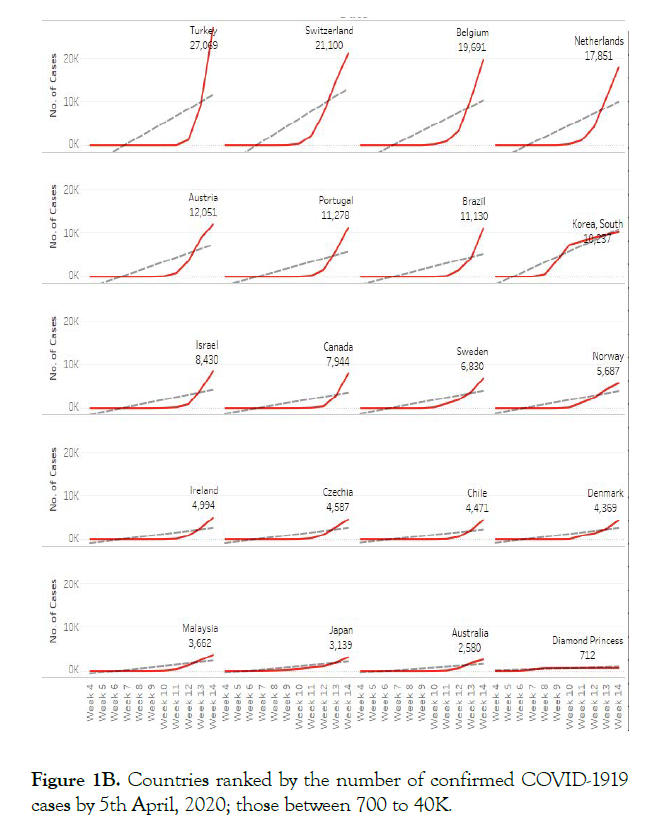
Figure 1B: Countries ranked by the number of confirmed COVID-1919 cases by 5th April, 2020; those between 700 to 40K.
Outputs from the base and advance predictive model for Spain, Belgium and the United Kingdom are shown in Figure 2A and B, where the model outputs are numbers of confirmed cases and fatalities. The base model adopts a simple-exponential-smoothing model, expanding on the time-series based on the historical weighted average daily values to generate a forecast of 15 days ahead. The advance predictive model adopts exponential smoothing with an additive trend and additive seasonality to produce a more representative forecast.
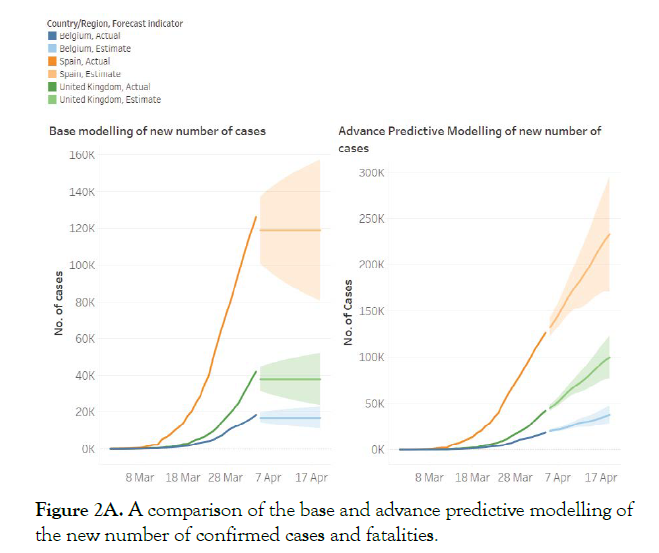
Figure 2A: A comparison of the base and advance predictive modelling of the new number of confirmed cases and fatalities.
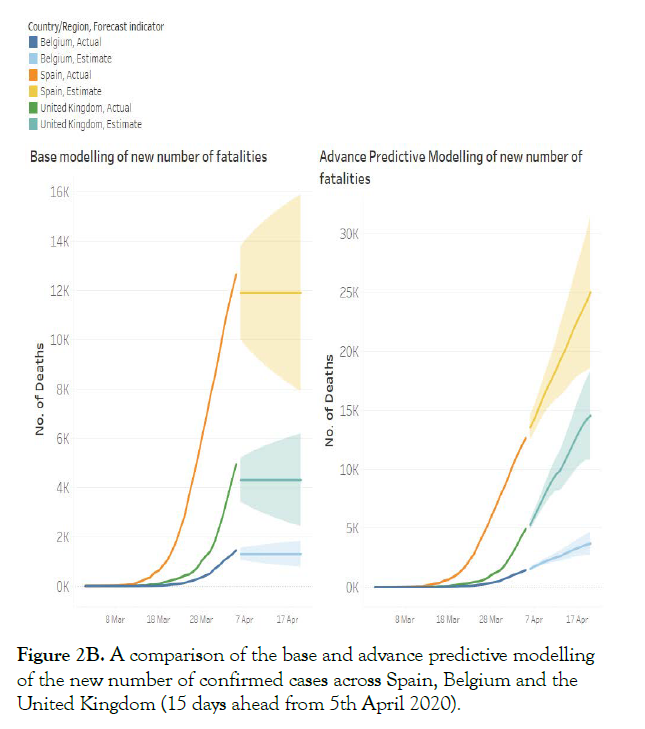
Figure 2B: A comparison of the base and advance predictive modelling of the new number of confirmed cases across Spain, Belgium and the United Kingdom (15 days ahead from 5th April 2020).
Root mean square error (RMSE) of the base case model for Spain, Belgium & the UK was 3403, 9265 and 1426, respectively. In comparison, RMSE in advance predictive case model was 1793, 5317 and 858, respectively, which indicated the absolute fit of the advance model is significantly better. RMSE of the base fatalities model for Spain, Belgium & the UK was 452, 963 and 127, respectively. In comparison, RMSE in advance predictive fatalities model was 220, 557 and 62, respectively, which indicated the absolute fit of the advance model is significantly better. Akaike’s information criteria (AIC) of the base cases model for Spain, Belgium & the UK was 575, 645 and 514, respectively. In comparison, AIC in the advance predictive model was 548, 625 and 497, respectively, which indicated again the advance case model has the most parsimonious fit, and a higher likelihood of the forecast. AIC of the base fatalities model for Spain, Belgium & the UK was 446, 501 and 355, respectively. In comparison, AIC in the advance predictive fatalities model was 412, 475 and 321, respectively, which indicated again the advance fatalities model has the most parsimonious fit, and a higher likelihood of the forecast.
The advance model forecasted that across all three countries, the total number of cases would likely be doubled by 19th April 2020, with a lower and upper limit of 170K-290K for Spain, 80K-120K for the UK and 35K-50K for Belgium. The UK has the highest population with 69 million inhabitants which is 20 million more than that in Spain and 6 times higher than that in Belgium. The UK had the lowest relative number of cases and fatalities per million population out of the three countries (Spain: 2800 cases/ million, and 282 fatalities/million, Belgium: 1780 cases/million and 140 fatalities/million, and the UK: 665 cases/million and 77 fatalities/million).
On the other hand, Belgium has two times higher number of hospital beds per 1000 people compared to Spain and the UK. Also, Belgium has the highest annual expenditure per capita out of the group, yet the number of fatalities is higher than thatin the UK by a factor of 2. This seems even stranger when we know the total number of local hotspots for potential COVID-1919 transmissions, like restaurants and foodservice outlets, is 2.5 times lower in Belgium compared to Spain and the UK. Spain has seen an earlier onset of COVID-1919 fatalities compared to the UK and Belgium, which has resulted in 2.5 times and 6 times higher number of fatalities, respectively, eventhough, geographically, these countries are considered close (Figure 3).

Figure 3: Social-economic metrics relevant to the COVID-1919 outbreak study.
Discussion
The predictive model showed the capability to handle short-term predictions for various countries in Europe. The upper and the lower error bands will increase as the length of forecast increase and can be corrected when more COVID-1919 data is available to adjust the multiple parameters. Comparisons can be made to the classic models such as SEIR.History has shown that people's behavior in fighting infectious diseases plays an important role in preventing the pandemics [16]. During the 1918-1919 flu epidemic, behavioral factors such as the abolition of large gatherings, physical distancing, and simple hand washing helped slow the spread of disease. The greatest preventive measures in tackling 1918 flu pandemic in the UK were school closure and people’s behavioral changes [17]. According to the World Health Organization, behavioural changes can reduce the virus spread by up to 80% [18]. Research has also shown that human behaviour modifications since 2003 have played an important role in managing the Ebola outbreak in 2001-2002 in Uganda [19]. Therefore, it is necessary to examine the behaviors, beliefs and actions of the people, organizations and the governments in this crisis. The higher prevalence of the disease could be rooted in the wrong lifestyle, misconceptions, or misbehaviour between the people, organizations and the governments. Reviews of various websites and news agencies suggest several similar evidences of violations of preventive measures in the UK, Spain and Belgium. Examples are given below.
KAP Evidence in Spain
The first case of the disease in Spain was reported on January 31st. In late February and early March, the Spanish government issued no serious warning that the disease was dangerous. The leading epidemiologist of the Spanish government said in late January that Spain probably “wouldn’t have more than a few cases”. In late February, a critical moment in the virus’ spread across the country, he told the press that “the virus isn’t in Spain”. These were clear examples of lack of enough KNOWLEDGE by the government. Obviously, the government didn’t forecast imminent threat. Soccer matches, social gatherings and political rallies were not stopped. Medical equipment, specialized tests, and facilities needed to detect and deal with epidemic were not prepared. Spain failed to detect an outbreak in the first few weeks. These were unfortunate examples of negligence and inappropriate PRACTICE by the government. Consequent lack of enough masks, gloves and gowns brought a higher level of risk for health professionals, and the consequent lack of enough sanitary materials exacerbated the speed of virus spread among the public. On March 8th, International Women's Day, while the disease was in critical condition, the Spanish government called on people to demonstrate on International Women's Day, which in turn spread the virus among the people. This was another example of improper PRACTICE by government. The first lady and three ministers of cabinet were diagnosed with COVID-19 few days after International Women's Day. This was an example of improper ATTITUDE by the government. By the time the government asked people stay home, people’s historical paranoia to long term dictatorship in Spain, enjoying unexpected holiday by coming to the streets leading to more congestion, latenight culture in Spain, and finally, the belief that this is a problem elsewherehelped the virus spread more easily. These illustrated people’s wrong ATTITUDES in appraising the imminent danger of infectious epidemics in Spain. By the time COVID19 patients were to die, people started to BELIEVE the depth of threat. That was too late. By March 13th, when Spanish Prime Minister declared the state of alarm, virus did spread almost everywhere through the chains of improper KAPs by government and people [20-24].
KAP Evidence in Belgium
Lack of appropriate KAP was also the main issue in Belgium. The Belgian government underestimated the risk of epidemic even when the virus did spread all over Italy in late February. Carnivals were allowed to proceed in many cities at the end of February (wrong ATTITUDE). On March 3rd, the government’s scientific committee predicted that in the worst-case scenario, the virus will infect 13,000 people, of who 2,000-3,000 will be hospitalized, and 500-700 will need intensive care unit (ICU). This means the government had no accurate KNOWLEDGE about the epidemics. Accordingly, the government didn’t implement wide screening, didn’t prepare enough protective masks, face shields and respiratorsto deal with epidemics and, also other preventive measures were minimal. On March 4th, the Flemish Agency for Care and Health advised schools to stay open. These were solid examples of negligence and inappropriate PRACTICE by the government. At the same time, a few mayors knew that the federal measures were insufficient and banned all outdoor and indoor activities in their municipalities. Eight days later, on March 12th, the government issued an order for closure of schools, cafes, discos and restaurants, but people were not required to stay home. On the other hand, Belgian people went skiing in Italy during school holiday (February 22nd till March 1st). This was an example of improper ATTITUDE by people. In a research study carried out in a 10-day period of March 23rd to April 3rd, it was shown that about 85% of companies did not follow the preventive measure of physical distancing. In another study, it was recorded that younger generations were less likely willing to follow the physical distancing rules. These were again few examples of wrong PRACTICE by people. By March 18th, when Belgian government ordered the mandatory physical distancing at the national level, virus did spread almost everywhere through the chains of improper KAPs by government and people. If the government had the correct KNOWLEDGE and ATTITUDE, their prediction based on the situation in Italy would have been closer to the realities and would have been started the correct PRACTICES of preventive measures 3-8 weeks earlier [25-26].
KAP Evidence in the UK
More than a month after the first COVID19 case was approved in the UK, the government declared for preparation against significant expansion of virus among the UK population. On March 13th, the UK chief scientific adviser told the press that the key in this epidemic is to build up the herd immunity to cut viral transmission.The government believed that 60% of people should be infected in order to havethe herd immunity. Obviously, by having this KNOWLEDGE and the corresponding ATTITUDE as the right approach by the government, the required medical equipment, specialized tests, and facilities needed to detect and deal with epidemic would not be prepared. The UK failed to detect an outbreak in the first few weeks. Consequent lack of enough masks, gloves and gowns brought a higher level of risk for health professionals, and the consequent lack of enough sanitary materials exacerbated the speed of virus spread among the public (negligence and MALPRACTICE). More than 200 scientists and researchers called on the government to reconsider this view, as the herd's immunity will pollute millions of people. Lack of accurate government statistics on the exact number of patients showed another weakness in PRACTICE. Despite the outbreak of coronavirus, a major march took place on March 8th in London. On March 22, the government announced that 1.5 million people who are infected with the virus would be isolated for 12 weeks. Despite heavy fines and court actions for those opposed to physical distancing, it was observed that some people broke the rules and ignored the warning. They were out to the parks with their families to enjoy the warm weather. A poll claimed that only 23% of British adults followed the government's recommendations. Also, incidents of racism were recorded. These examples indicated the wrong ATTITUDE and the wrong PRACTICE by people [27-41].
KAP Evidence in World Health Organization (WHO)
The current COVID19 is not the first world pandemic and won’t be the last one. What have we learned in terms of KAP from the previous ones? The following paragraphs present valid questions that underlie the elements of an appropriate multi-component systemto appropriately and timely dealwith a pandemic.
Who is the leader of the world public health? What is the role of the leader? Who should have been forecasted the upcoming pandemic? Who must have predicted the unforeseen threats of a possible pandemic? Who must have warned the world far in advance about the requirements for an upcoming pandemic? Who must have prioritized the necessities in advance? The upcoming pandemic, the unforeseen threats, the requirements and the priorities all could have been incorporated in epidemiological games for public. Who could have produced these games to educate people about the history of pandemics and prepare their mentalities for preventive responsibilities in future pandemics? Epidemiological game would inject the required KONWLEDGE, the appropriate ATTITUDE and the right and step by step PRACTICE to do their individual roles in order to keep themselves, their families, their co-workers and their communities as safe as possible during epidemics.
Who should have carefully monitored the transparency of data? Are people given the right to be aware of the true risk of contagiousness and mortality? Who should have worked towards minimizing the health care inequalities among the countries before and during infectious pandemics? What will happen if the next viral outbreak is ten times more severe than the current COVID19 in terms of contagiousness and mortality and starts from a poor country? Who should immediately identify the risk and help the poor country to recognize and prevent the infection from spreading? Who should have set up the international collaborations beforehand for immediate and advanced developments such as the developing the diagnostic kits? Who should have established the international collaborations among the world key laboratories in advance to produce the proper vaccines quickly? Who should have previously developed the international collaborations among various pharmaceutical companies for immediate mass production of vaccines after its development? All the above-mentioned issues are elements of a practical and efficient multi-component system that could have been set up, years in advance, and tested and improved every year. Who must have prepared this practical system to deal with the possible pandemic? Who should have tested the proposed multi-component system against time to understand possible shortcomings and unforeseen requirements? Who should have verified the multi-component system in collaboration with different countries in five continents to unfold limitations? Who should have tried out the multi-component system in mutual manoeuvres with army forces to disclose the weaknesses? Who should have developed the required software’s to run the practical system? The Examples of such software’s are the ones using satellite and cell phones for locating the patients in interactive maps for public to control their physical distancing or the software that will help people find the best associated resources. The COVID19 disease was first identified in December 2019. If there was such a strong and prepared multi-component system explained above, the discovery of the first case could have turned on the whole system immediately (Figure 4).
Figure 4: A conceptual framework of the Knowledge, Attitude and Practice integrated by the elements of multi-component system explained above. Collaboration at all levels of international, governmental, organizational and public is needed to overcome the pandemic crisis.
Conclusions
It seems the current COVID19 pandemic crisis and its high mortality is the result of all the above-mentioned issues at international, governmental, organizational and individual levels. Each level must be armed with the correct KAP associated with true leadership and transparency in order to properly accomplish its mission.
REFERENCES
- Tyrrell DAJ, Bynoe ML. Cultivation of a Novel Type of Common-cold Virus in Organ Cultures. Br Med J. 1965.
- Visy JM, Le Coz P, Chadefaux B. Homocystinuria due to 5,10 methylenetetra hydrofolate reductase deficiency revealed by stroke in adult siblings. Neurology. 1991.
- Number of coronavirus (COVID-19) deaths in Europe since February 2020. 2020.
- Hua J, Shaw R. Corona Virus (COVID-19) “Infodemic” and Emerging Issues through a Data Lens: The Case of China. Int J Environ Res Public Health. 2020.
- Times, The New York. "Coronavirus Live Updates: WHO. Declares a Global Health Emergency". 2020.
- Jaccard J, Dittus PJ, Gordon V V. Maternal correlates of adolescent sexual and contraceptive behavior. Fam Plann Perspect. 1996.
- Rav-Marathe K, Wan TTH, Marathe S. A Systematic Review on the Kap-O Framework for Diabetes Education and Research. Med Res Arch. 2016.
- Schwartz NE. Nutrition knowledge, attitudes and practices of Canadian public health nurses. J Nutr Edu. 1976.
- Deng JF, Olowokure B, Kaydos-Daniels SC, Chang HJ, Barwick RS, Lee ML, et al. The SARS International Field Team: Severe acute respiratory syndrome (SARS): knowledge, attitudes, practices and sources of information among physicians answering a SARS fever hotline service. Pub Health. 2006;120:15-19.
- Di Giuseppe G, Abbate R, Albano L, Marinelli P, Angelillo IF. A survey of knowledge, attitudes and practices towards avian influenza in an adult population of Italy. BMC Infect Dis. 2008.
- Rubin GJ, Amlôt R, Page L, Wessely S. Public perceptions, anxiety, and behaviour change in relation to the swine flu outbreak: Cross sectional telephone survey. BMJ. 2009.
- Effler PV, Carcione D, Giele C, Dowse GK, Goggin L, Mak DB. Household responses to pandemic (H1N1) 2009-related school closures, Perth, Western Australia. Emerg Infect Dis. 2010.
- Jin YH, Cai L, Cheng ZS. A rapid advice guideline for the diagnosis and treatment of 2019 novel coronavirus (2019-nCoV) infected pneumonia (standard version). Mil Med Res. 2020.
- Dong E, Du H, Gardner L. An interactive web-based dashboard to track COVID-19 in real time. Lancet Infect Dis. 2020.
- Chen H, Guo J, Wang C. Clinical characteristics and intrauterine vertical transmission potential of COVID-19 infection in nine pregnant women: A retrospective review of medical records. Lancet. 2020.
- Coronavirus: Why changing human behavior is the best defense in tackling the virus. 2020.
- Lister T, Rebaza C. How Spain became a hotspot for coronavirus.CNN. 2020.
- WHO. World Health Organization outbreak communication planning guide. 2008.
- Hewlett BS, Amolat RP. Cultural contexts of Ebola in Northern Uganda. Emerg Infect Dis. 2003.
- McMurtry A, Zampano G. COVID-19-what-went-wrong-in-italy-and-spain. 2020.
- Ward A. How Spain’s coronavirus outbreak got so bad so fast and how Spaniards are trying to cope. VOX. 2020.
- Perez MaestroL, Goodman Al, Formanek I, Ramsay M, WoodyattA. Hundreds of thousands return to work as Spain relaxes coronavirus lockdown.
- Fotheringham A. Coronavirus: Why are deaths rising so quickly in Spain? Aljazeera. 2020.
- Aguado J, Allen N. Madrid region to close all schools over coronavirus concerns: Report. Reuters. 2020.
- Bradshaw L. Older generations are better at following coronavirus measures, survey shows. 2020.
- https://en.wikipedia.org/wiki/2020_coronavirus_pandemic_in_Belgium
- Booth W. UK resists coronavirus lockdowns, goes its own way on response. Washington Post. 24 March 2020.
- Sky News. Coronavirus: Are people ignoring social distancing advice. 2020.
- https://www.independent.co.uk/news/health/coronavirus-herd-immunity-uk-nhs-outbreak-pandemic-government-a9399101.html
- Mueller B. As Europe Shuts Down, Britain Takes a Different and Contentious, Approach.
- Boyle C. On coronavirus containment, Britain's Johnson is less restrictive than other European leaders. Los Angeles Times. 2020.
- Boris Johnson's coronavirus adviser calls for a way out of lockdown - Britain may still need to adopt herd immunity. The Times. 2020.
- Alwan NA, Bhopal R, Burgess RA, Evidence informing the UK’s COVID-19 public health response must be transparent. Lancet. 2020;395(10229):1036-1037.
- Cellan-Jones R. Coronavirus: Mobile networks send 'stay at home' text. BBC News. 2020.
- Evening Standard. Who are the 1.5 million vulnerable people self-isolating for 12 weeks? 2020.
- Roberts M. Coronavirus: What is shielding? BBC News. 2020.
- BBC News. International Women's Day: Marchers around the world call for equality. 2020.
- Fidler M. International Women's Day 2020 around the world - in pictures. The Guardian. 2020.
- Tominey K. Only a quarter of UK adults are strictly following government's coronavirus advice, poll finds. The Daily Telegraph. 2020.
- Campbell L. Chinese in UK report 'shocking' levels of racism after coronavirus pandemic. The Guardian. 2020.
- BBC News. Coronavirus: Men wanted over racist Oxford Street attack on student. 2020.
Citation: Moghadami M, Wa K, Smiley A (2020) KAP Evidence and Farecasting the Corona Virus Outbreak in the UK, Spain and Belgium. Health Care Services 8: 256. doi: 10.35248/2375-4273.20.8.256
Copyright: © 2020 Moghadami M, et al. This is an open-access article distributed under the terms of the Creative Commons Attribution License, which permits unrestricted use, distribution, and reproduction in any medium, provided the original author and source are credited.
